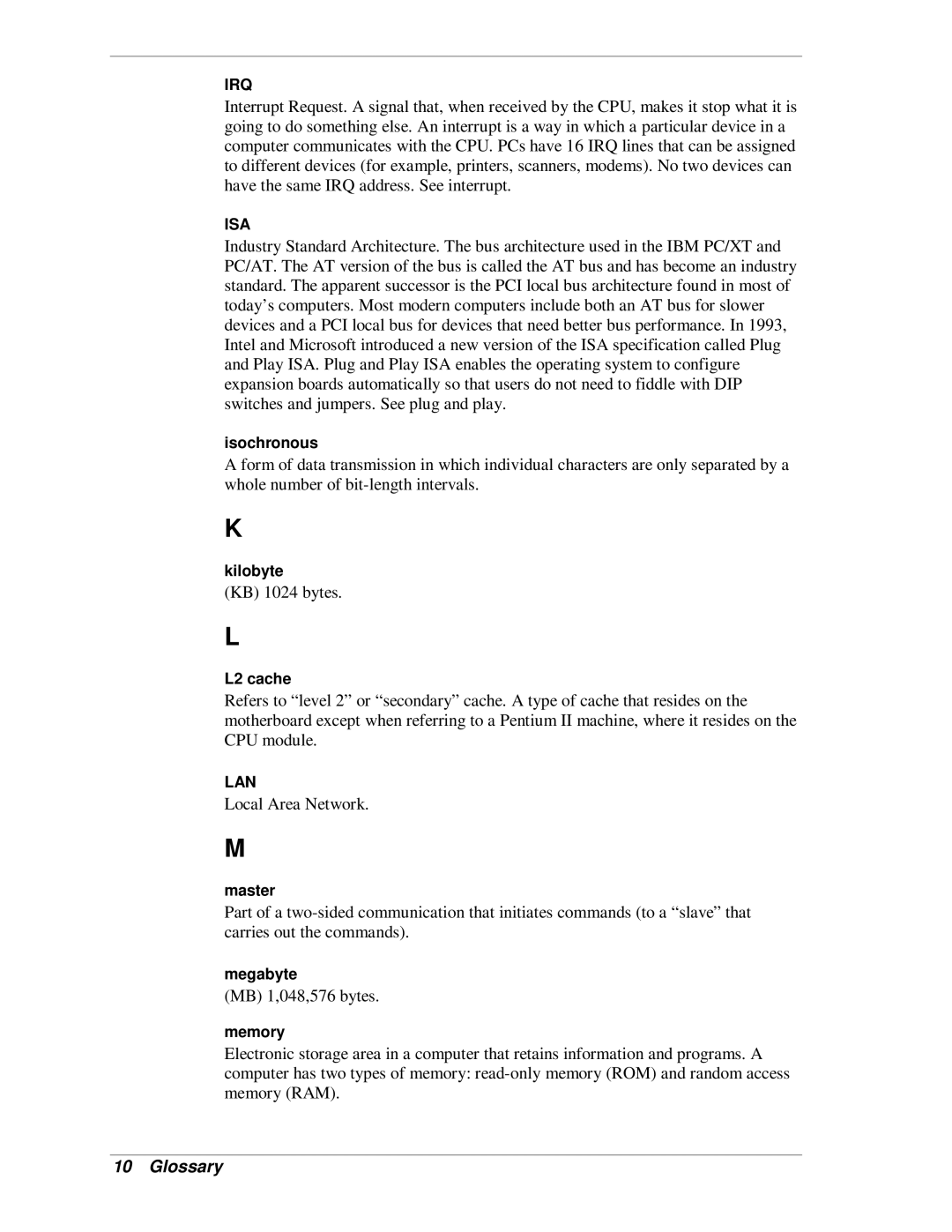
IRQ
Interrupt Request. A signal that, when received by the CPU, makes it stop what it is going to do something else. An interrupt is a way in which a particular device in a computer communicates with the CPU. PCs have 16 IRQ lines that can be assigned to different devices (for example, printers, scanners, modems). No two devices can have the same IRQ address. See interrupt.
ISA
Industry Standard Architecture. The bus architecture used in the IBM PC/XT and PC/AT. The AT version of the bus is called the AT bus and has become an industry standard. The apparent successor is the PCI local bus architecture found in most of today’s computers. Most modern computers include both an AT bus for slower devices and a PCI local bus for devices that need better bus performance. In 1993, Intel and Microsoft introduced a new version of the ISA specification called Plug and Play ISA. Plug and Play ISA enables the operating system to configure expansion boards automatically so that users do not need to fiddle with DIP switches and jumpers. See plug and play.
isochronous
A form of data transmission in which individual characters are only separated by a whole number of
K
kilobyte
(KB) 1024 bytes.
L
L2 cache
Refers to “level 2” or “secondary” cache. A type of cache that resides on the motherboard except when referring to a Pentium II machine, where it resides on the CPU module.
LAN
Local Area Network.
M
master
Part of a
megabyte
(MB) 1,048,576 bytes.
memory
Electronic storage area in a computer that retains information and programs. A computer has two types of memory:
